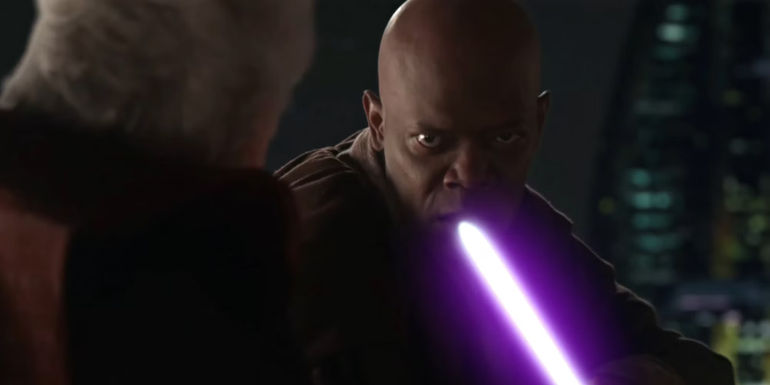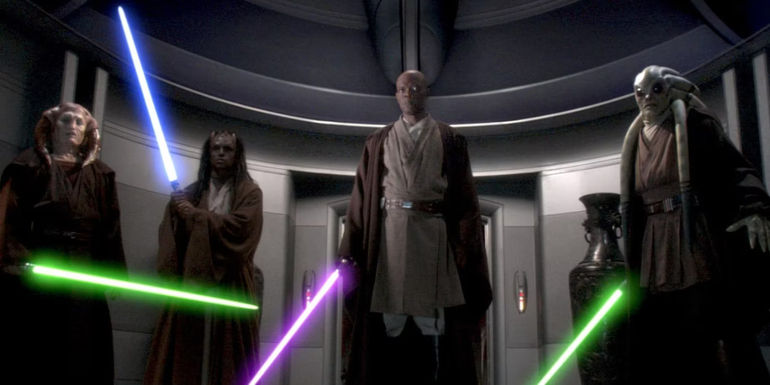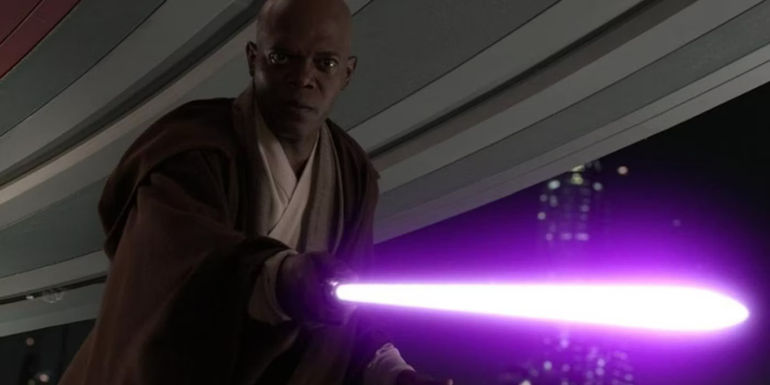
The Unforeseen Strength of Mace Windu's Vaapad: A Force for Balance in the Jedi Order

Explore the untold story of how Mace Windu's unique lightsaber form, Vaapad, could have reshaped the fate of the Jedi Order and brought balance to the Force in a galaxy far, far away.
Embracing the Shadows: The Power of Vaapad
In the annals of Jedi history, one figure stands out for his mastery of a lightsaber form that danced on the edge of darkness and light. Mace Windu's Vaapad was not just a combat technique; it was a philosophy, a way of harnessing the raw power of the Force in its entirety. Vaapad, an evolution of the Juyo form, demanded a delicate balance between aggression and control, drawing upon emotions that the Jedi Order had long shunned.
Mace Windu with a lightsaber in Revenge of the Sith
The controversial nature of Vaapad stemmed from its reliance on emotions like anger and rage, emotions traditionally associated with the dark side. While the Jedi Council hesitated to embrace such a form, Windu saw beyond the surface. He understood that true balance required an acknowledgment of the shadows within oneself, a recognition that the light could not exist without the dark. Vaapad was a testament to Windu's insight into the duality of the Force and his willingness to navigate its complexities.
Mace Windu battling Sheev Palpatine in Revenge Of The Sith.
The Ancient Wisdom of Balance
Long before the Jedi Order's obsession with eradicating the dark side took root, there existed a deeper understanding of balance in the Force. The Prime Jedi, a figure lost to the mists of time, grasped a truth that eluded many of his successors: true harmony required the coexistence of light and darkness. The Jedi of the Age of the Republic strayed from this ancient path, viewing the dark side as a threat to be extinguished rather than a force to be understood.
Jedi Council members Yoda, Mace Windu, Plo Koon, and Ki-Adi-Mundi in the council chambers on Coruscant
The schism that birthed the Sith further cemented the Jedi's fear of the dark, pushing them towards a rigid adherence to the light. However, Mace Windu's Vaapad represented a return to the roots of Jedi philosophy. By integrating elements of the oldest lightsaber forms into Vaapad, Windu honored the legacy of the Prime Jedi and sought to bridge the gap between the Order's past and its uncertain future.
Mace Windu with three other Jedi in Star Wars: Revenge of the Sith.
A Missed Opportunity for Redemption
The Jedi Council's reluctance to embrace Vaapad symbolized a larger pattern of resistance to change within the Order. Despite its potential to bring balance and resilience to the Jedi, Vaapad remained relegated to the sidelines, viewed with suspicion and fear. Windu's mastery of the form hinted at a path towards redemption for the Jedi, a chance to reclaim their lost equilibrium and stand united against the encroaching darkness.
Anakin Skywalker and Mace Windu discussing Palpatine being a Sith Lord in Revenge of the Sith
Anakin Skywalker's tragic fall to the dark side could have been averted had the Council embraced Vaapad's teachings. By acknowledging the necessity of balance and the wisdom in harnessing both light and dark, the Jedi could have steered Anakin away from his fateful choices. Vaapad represented not just a combat style, but a philosophy of acceptance and growth, one that the Jedi sorely needed in their darkest hour.
Samuel L. Jackson as Mace Windu pointing his lightsaber towards the camera in Revenge of the Sith



















